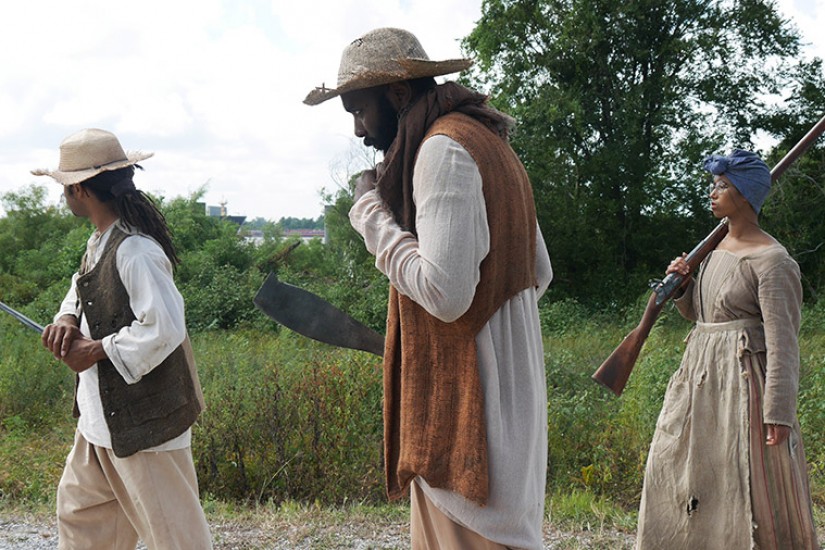On a cloudy March afternoon, I climbed a levee in Montz, Louisiana, with the artist Dread Scott. The wind was whipping, and muddy water streamed through an open dam into the Bonnet Carré Spillway. The area, once home to sprawling riverfront plantations, is now dedicated to wildlife and recreation. But the day we visited, its hiking trails, off-road-vehicle courses, and historic cemeteries were under water. The crowns of submerged cypresses swayed in the current; across the spillway, the sprawl of Shell’s Norco oil refinery floated like a mirage. A sign on the barbed wire fence read, “No Trespassing, U.S. Government Property.”
“The legacy of slavery,” Dread Scott told me, “should be in the way and causing trouble.” We were having coffee in the Brooklyn neighborhood where he lives with his wife, Jenny Polak, a fellow artist. Scott, unerringly polite but refreshingly profane, was brainstorming replacements for America’s Confederate monuments. For New Orleans’s Lee Circle, where the rebel general’s likeness came down in 2017, he suggested a giant statue of Toussaint Louverture, leader of the Haitian Revolution. Better still, Scott said, to leave Lee fallen in the street, blocking traffic for the next 15 years.
Scott, 54, is immediately convincing as canny rebel mastermind. Round spectacles and silvering frohawk plume accentuate his vaguely avian alertness—he is careful in conversation, but also quick, daring, and direct. Avowedly communist, Scott describes his work as “revolutionary art to propel history forward.” Since the 1980s, his performances and installations have transformed familiar public spaces into assaultive mirrors of American injustice.
